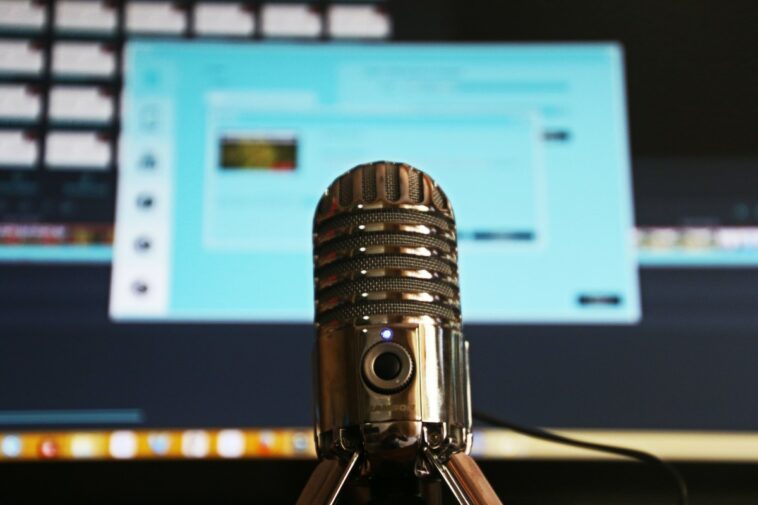From music, history, literature to career, relationships and pop culture, just like Twitter, podcasts offer fun and honest conversations on a variety of topics. Whether you’re a host, producer or editor, your listeners want to hear from you even after they have streamed your latest episode. People love to connect more deeply with their favourite shows and Twitter gives podcasters many creative opportunities to engage with leaned-in audiences.
If you’re a podcaster, follow these simple yet impactful tips to strengthen your connection with your listeners:
Use Twitter to source your content
During the planning phase, you can reach out to your listeners and request feedback or suggestions for your upcoming projects. A true sounding board, the service can be used for story sourcing, inspiration, or to gather feedback.
Pro-Tip: iOS users can initiate a Twitter Space to interact with their listeners. Spaces is a new way to have live audio conversations on Twitter in an intimate environment.
Introduce your new podcast to the world
Creating and launching a podcast is no easy feat, so make sure you tell your followers about it in advance, and be sure to Tweet about it on the day it launches. You can Tweet the link to your podcast episode, which will also help drive new listeners directly to your website.
Take a cue from how Hemant Kshirsagar (@kshirsagar) introduces the latest episode of his #IFDpodcast.

Embeddable Tweet link: https://twitter.com/kshirsagar/status/1399616602887258121
Pro-Tip: You can use both video or audio formats to give your Tweet more stopping power in your followers’ timelines. iOS users can share audio snippets from the podcasts with the help of Voice Tweets to entertain fans and share a preview of their work.
Mention the host and/or studio in your Tweet
You can mention relevant stakeholders in your Tweets to connect them to the conversation. It also creates an opportunity for them to reply or Retweet the content, further extending your Tweet’s reach.
Mentioning the host, producer, studio, or sponsor also makes your Tweets more informative. This will help you to not only endorse the other relevant parties, but will help you provide an easy way for listeners to learn more about them.
Pro-Tip: You can ask the person you are mentioning, such as the host or producer, to either Retweet or Retweet with a comment of your original Tweet to get maximum exposure.
Check out how Jai Sonpal (@thejollyfoot) arouses interest for this episode of The Talking Barefoot Podcast by talking about the episode and guests featured.

Embeddable Tweet link: https://twitter.com/thejollyfoot/status/1399747946489344001
Use one specific hashtag when Tweeting about your show
Hashtags are great for both connecting conversations and promoting discoverability. You can use your own custom hashtag to announce a new season, on your launch day, to highlight weekly episodes, share the finale, and even to Tweet after the season ends. Hashtags make it easy to tune back into the conversation around your show.
With the help of these tips, you can create your own podcast hashtag:
- Make it easy to remember
- Ensure it is easy to spell
- Research how it’s being used already
- Avoid using all caps
- Don’t include contractions
Pro-Tip: You can create your show-specific hashtag during the planning phase of your new show, and have your team Tweet the hashtag near the launch day.
Reply to fan questions
Developing your audience base begins with connecting with them. You can start a conversation on Twitter by replying to a listener’s Tweet. Replying to a question makes your fans feel heard and valued.
Pro-Tip: You can include a link to your episode while replying to a listener’s question about any of the shows.
Cross-promote other podcasts
There’s nothing worse than finishing your favourite podcast and being left with nothing to listen to next. You can solve this problem by endorsing your favourite listen, or other shows from within your podcast network. This is a great way to share the love and inform listeners about what’s airing or premiering in the coming weeks. You can even support a new podcast by mentioning their username, including an image of their cover art, or sharing a link to their podcast platforms.
Pro-Tip: You can create a plan or content calendar with other podcasts within your network to promote each other.
Tweet about bonus episodes
Besides the premiere, weeklies, and the finale, you should also Tweet about the bonus episodes. If people haven’t yet subscribed to your podcast, you would like to make sure they are aware of any new or unscheduled episodes you are releasing.
Pro-Tip: Plugging the link to subscribe to your podcast never hurts! Include it so listeners know how to always get your podcast delivered to their phone, especially the bonus episodes your fans may not be expecting.
On that note, did you check out Sneha Jaiswal (@Writer_Jaiswal) Podcast series where she tries to go beyond her comfort zone of writing.

Embeddable Tweet: https://twitter.com/Writer_Jaiswal/status/1388969075527667712
Create and share an audiogram
Audiograms are short, captioned audio files with either a static or dynamic video that can be made with video software or apps. This format couldn’t be more perfect for helping podcasts stand out on Twitter, and lets the most powerful parts of your episodes shine.
Pro-Tip: Make and Tweet a few audiograms per episode to promote the show. Select a quote or sound bite from the episode that will drive the most curiosity.
Resurface old yet awesome content
Fans want to be reminded of your episodes — old and new. You can reshare your successful episodes weeks, months, or even a year after they originally aired to highlight your favorite interviews and keep your podcast in people’s minds between seasons.
Pro-Tip: To do so, you can go through your episode archives for content that performed well within the last year and use that maybe for your next #ThrowbackThursday Tweet!
Lastly, while on the service, have some fun with emojis since they are a great way to make Tweets more visual, and thus are more eye-catching.


